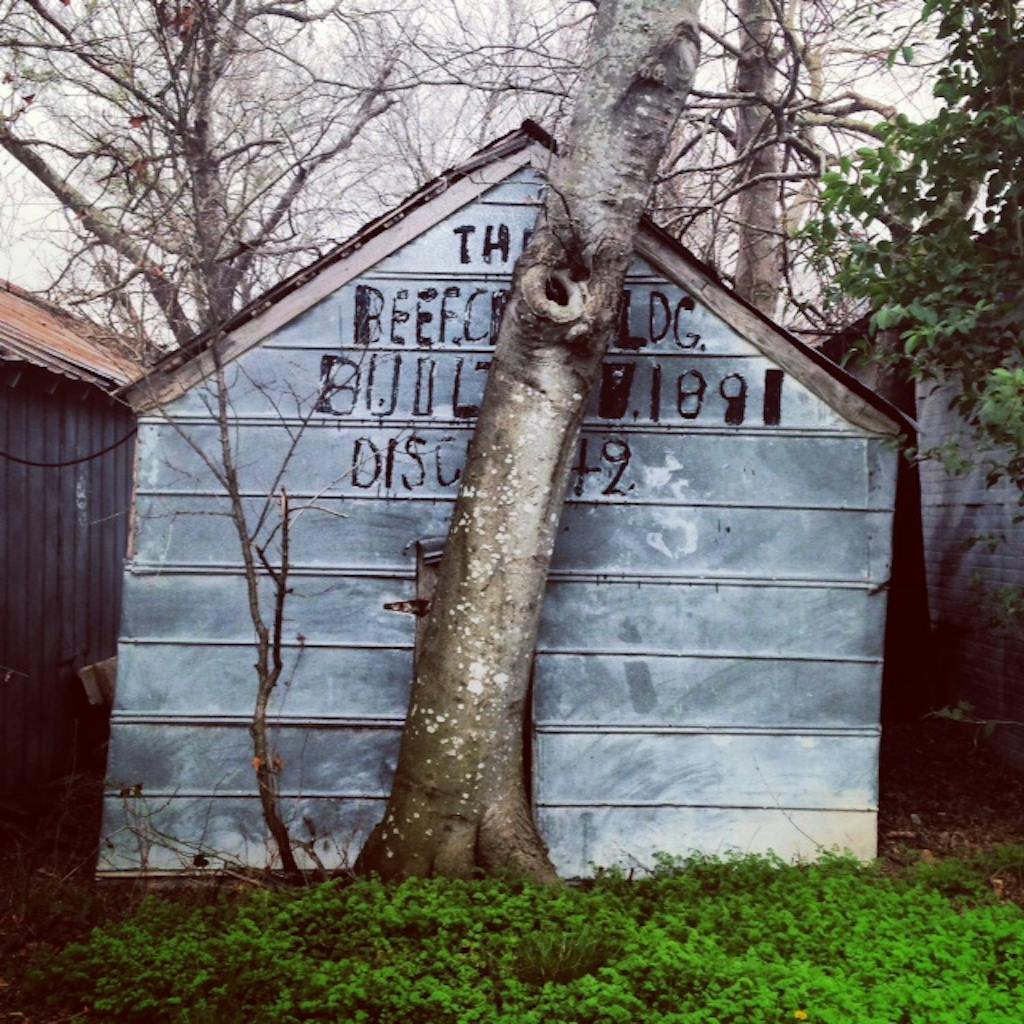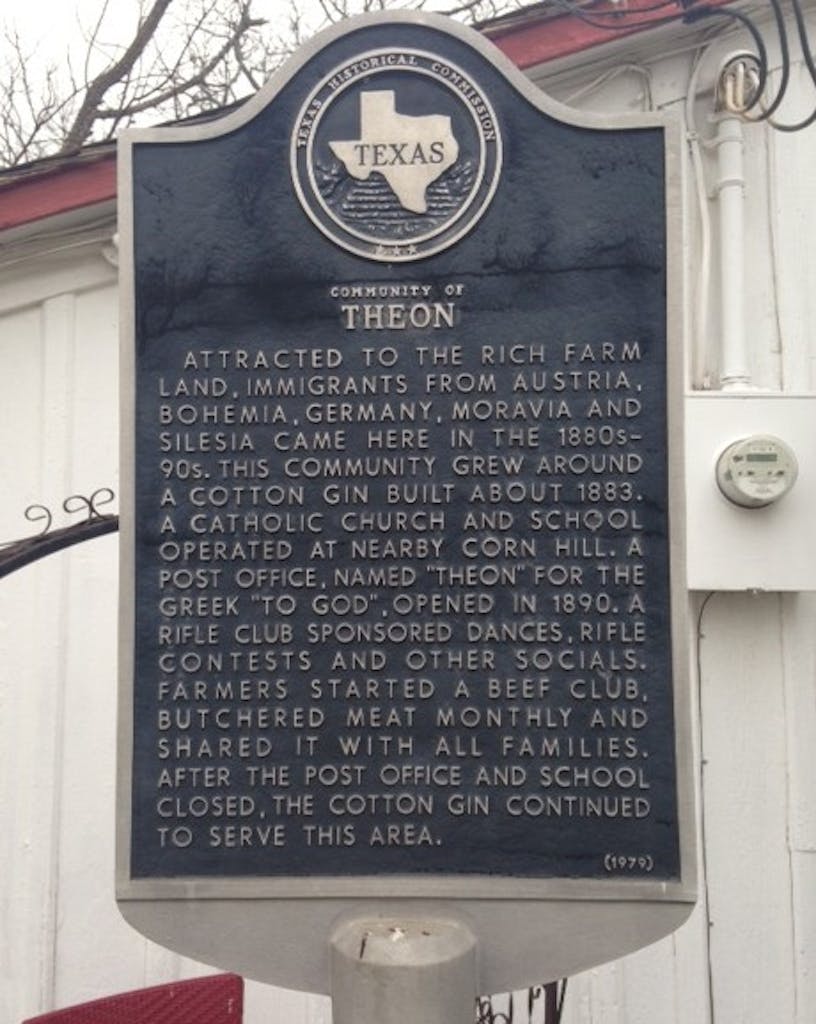There’s a Beef Club in Theon, Texas, but good luck getting a membership today. All that’s left of this club that disbanded in 1949 is a tiny metal clad building with a slight lean. The birth and death date are recorded on the front of the building as if on a gravestone, but in a haphazard paint job. A mature tree grows directly in front of the building’s only door that’s about two feet wide and five feet tall.

I made my way to this northern edge of Williamson County last week because of a tip from my friend Steve Dean. He’s on a constant search for dance halls in Texas, and the Moravian Hall a few miles down the street is a great one that opened in 1913. If you take the ten minute drive from Jarrell along I-35 to see the Beef Club, you should continue on to the dancehall and the century-0ld Trinity Church in nearby New Corn Hill.
The Beef Club in Theon was one of many in East and Central Texas. As explained in the Handbook of Texas, “the rural Czech settlements were characterized by such cooperative institutions as the beef club, designed to provide each member family with a supply of fresh beef weekly during the spring and summer.” I’ve found records of similar Beef Clubs in Grapevine, Neusser, West, Hockley, San Augustine, and one at the historic Buckholts SPJST. There was also one in Prairie Chapel as told in Historic McLennan County. It’s death knell was sounded when technology allowed for better ways to preserve meat. “With the arrival of electricity and home refrigeration after WWII, the beef club disbanded.”
Most similar clubs that I could find records of were organized in the early twentieth century, so Theon was an early adopter of this type of community sharing concept. They also did the butchering monthly, as noted in the historical market across the street from the Beef Club building, while many other clubs butchered their beef weekly. West native Mary Hanak Simcik shared in her oral history that her family was the member of a Beef Club in West. Without refrigeration you had to eat the beef quickly since it “would last from Saturday until about Tuesday.” It was pork, not beef, that was preserved in lard or by smoking in the smoke house, and that pork or a freshly harvested chicken was served the rest of the week.

The barbecue Mikeskas have a connection back to that club in Theon as well. Tim Mikeska who once ran Rudy Mikeska’s in Taylor and now owns Mikeska Brands. He is related to John Valis through his paternal grandmother, and Valis was a butcher for the Theon Beef Club. It was actually a similar club in Taylor that gave the Mikeskas their start in the butchering business and later in barbecue.
“My grandfather John Mikeska, had one in Taylor from 1918 to mid 1940’s. That’s where he taught his sons butchering. Those skills remained in their lives and brought each of them into the BBQ business. I’m a 5th generation butcher. Beef clubs is where local farmers or local families with cattle, sheep, pigs, and goats would bring their animals to a barn or any outbuilding and the skilled Czech butchers would slaughter, skin, and break the entire animal down. They needed a barn with a sturdy beam, or in my grandfathers case a tree, to hang the animal. Everything was used, nothing wasted. Hides, brain, heart, kidneys, liver, intestines. The intestines were washed out and used for sausage casings.”
Beef Clubs proved especially useful as a way for trained butchers to survive during the Great Depression. Tim Mikeska recalls his family’s involvement with them. “In payment for their services, these Czech butchers would get a ‘cut’ of each animal. My grandfather was poor. Everyone was poor during the depression, but he told his sons that with these skills handling meat they may continue to be poor but they wouldn’t be hungry.”







